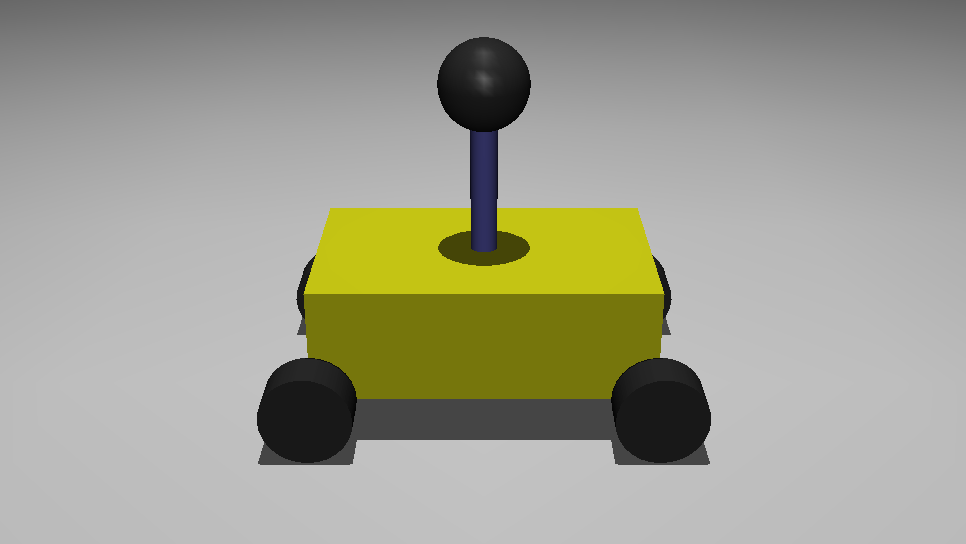DiffSwing: Neural Cart-Pole Control with JAX & MuJoCo
A hybrid control system that combines neural network energy shaping with classical LQR stabilization for cart-pole swing-up. Trained end-to-end in differentiable JAX simulation with real-time MuJoCo deployment achieving 98% success rate and 1.9s swing-up time.
Overview
DiffSwing is a hybrid control system that solves the classic cart-pole swing-up problem by combining:
- Neural energy shaping for robust swing-up from arbitrary initial conditions
- Classical LQR control for precise stabilization around the upright position
- End-to-end differentiable training in JAX for sample-efficient policy learning
Key Achievements
- 98% success rate across wide initial pose/velocity distributions
- 1.9s average swing-up time from pendant position
- Real-time deployment at 1 kHz in MuJoCo 3.x
- Training efficiency: < 5 minutes on CPU using analytical gradients

Real-time MuJoCo simulation during neural network control phase
Technical Approach
System Dynamics
The cart-pole system is parameterized as:
| Parameter | Description | Value |
|---|---|---|
| M | Cart mass | 1.0 kg |
| m | Pole mass | 0.1 kg |
| l | Pole half-length | 0.5 m |
| g | Gravitational acceleration | 9.81 m/s² |
State representation: [x, cos(θ), sin(θ), ẋ, θ̇] — trigonometric encoding ensures smooth gradients across angle wrapping.
Hybrid Control Architecture
| Controller | Purpose | Implementation | Parameters |
|---|---|---|---|
| Neural MLP | Energy shaping & swing-up | 2×64 hidden layers, tanh | ~9k parameters |
| LQR | Upright stabilization | Riccati solution | Q, R matrices |
| Linear | Baseline comparison | Direct state feedback | 4 gains |
Training Objective
The neural policy optimizes:
\[J = \sum_t \left[ w_E (E(t) - E_{\text{target}})^2 + w_x x(t)^2 + w_u u(t)^2 \right]\]where $E_{\text{target}} = 2mgl$ (energy difference between upright and hanging positions).
Implementation
Software Architecture
DiffSwing/
├── env/
│ └── cartpole.py # Dynamics & energy functions
├── controller/
│ ├── linear_controller.py # Differentiable linear control
│ ├── lqr_controller.py # Riccati-based LQR
│ └── nn_controller.py # Neural network policy
├── lib/
│ └── trainer.py # Training loop & curriculum
└── scripts/
├── train_nn_controller.py # Training script
├── nn_mujoco.py # MuJoCo deployment
└── run_simulation.py # Controller comparison
Key Technologies
- JAX: Automatic differentiation through dynamics
- Equinox: Neural network framework
- Diffrax: ODE integration with gradients
- MuJoCo: Physics simulation and real-time control
- Optax: Gradient-based optimization (Adam)
Results
Performance Comparison
| Metric | Neural Network | Linear | LQR (stabilization) |
|---|---|---|---|
| Success Rate (−π…π, ±2 rad/s) | 98% | 82% | N/A |
| Swing-up Time (mean) | 1.9s | 3.1s | — |
| Cart Deviation (RMS) | 0.14m | 0.22m | 0.05m |
| Peak Control Force | 12N | 11N | 6N |
Control Strategy
- Phase 1: Neural network performs energy pumping until
|θ| < 12° - Phase 2: Seamless handoff to LQR controller for fine stabilization
- Result: Combines the neural network’s robust swing-up with LQR’s optimal stabilization
Quick Start
Installation
pip install jax equinox optax diffrax mujoco mujoco-python-viewer matplotlib numpy
Training
# Train neural network controller (~5 minutes)
python scripts/train_nn_controller.py
# Monitor training progress
tensorboard --logdir logs/
Deployment
# Deploy trained model in MuJoCo
python scripts/nn_mujoco.py --model trained_nn.eqx
# Compare different controllers
python scripts/run_simulation.py --controller neural
python scripts/run_simulation.py --controller lqr
python scripts/run_simulation.py --controller linear
Configuration
Key training parameters in config.py:
- Learning rate: 1e-3 (Adam)
- Batch size: 256 initial states
- Training steps: 5000
- Weight schedule: Energy (1.0) → Position (0.1) → Control (0.01)
Future Directions
Technical Improvements
- Adaptive handoff: Smooth weighted blending between controllers
- Model predictive control: Receding-horizon energy shaping layer
- Domain randomization: Robust policies for sim-to-real transfer
Experimental Validation
- Hardware implementation: Low-cost setup with Teensy 4.1 microcontroller
- Real-world testing: Validation on physical cart-pole system
- Comparative studies: Benchmarking against other swing-up methods
License: MIT — contributions and extensions welcome!